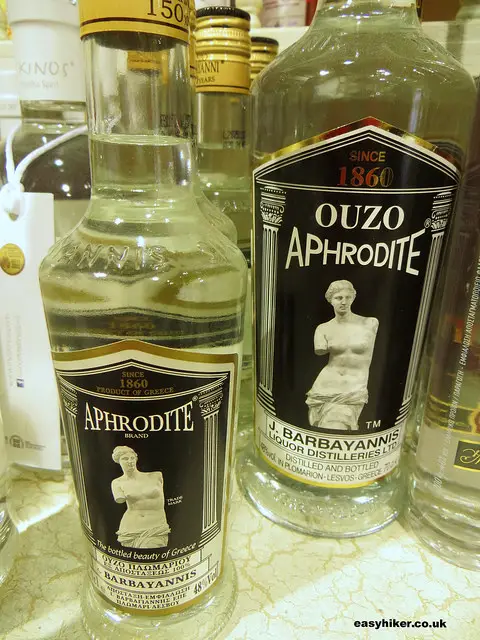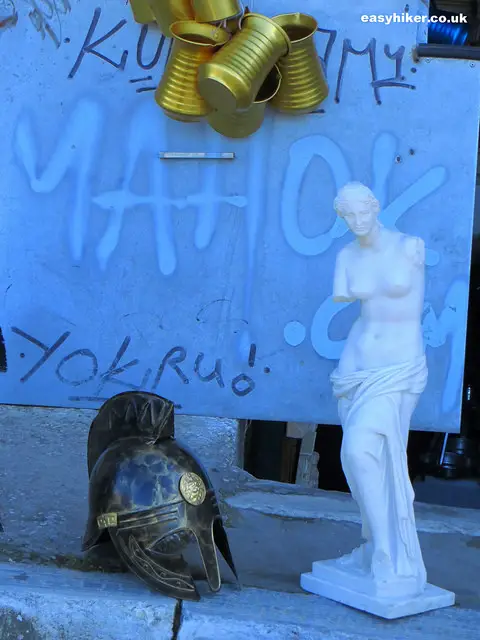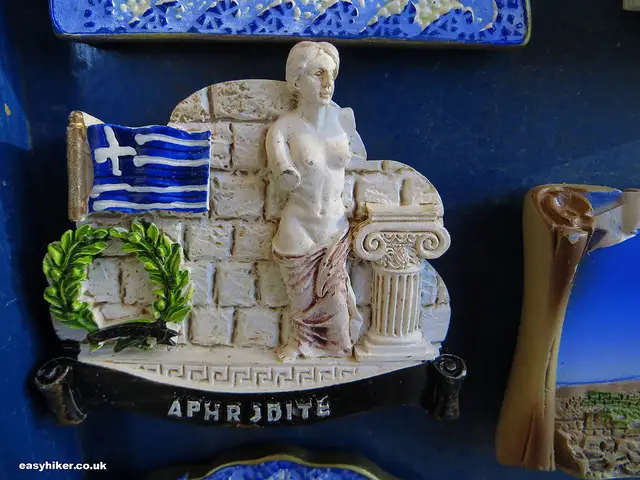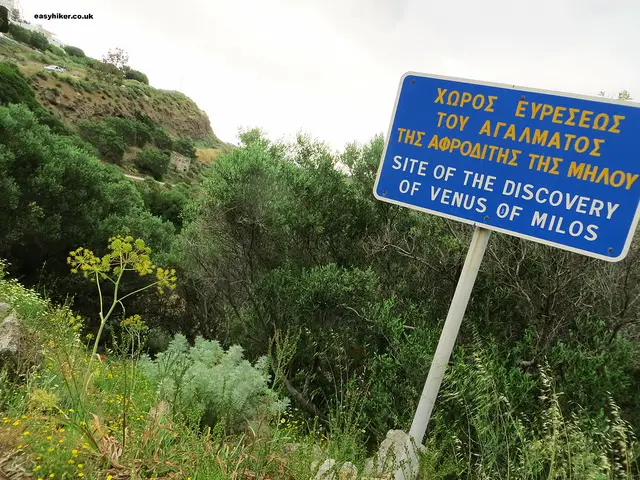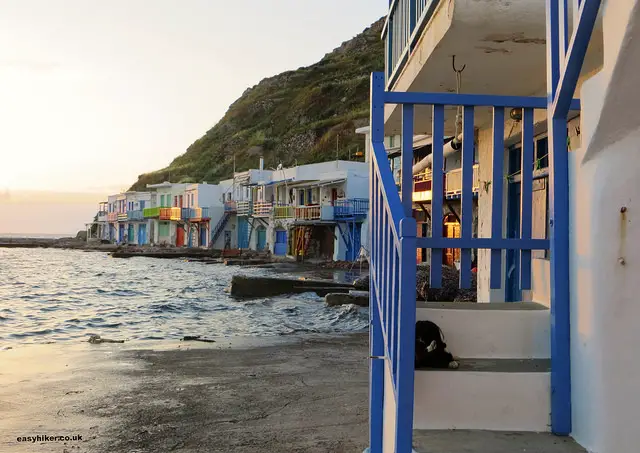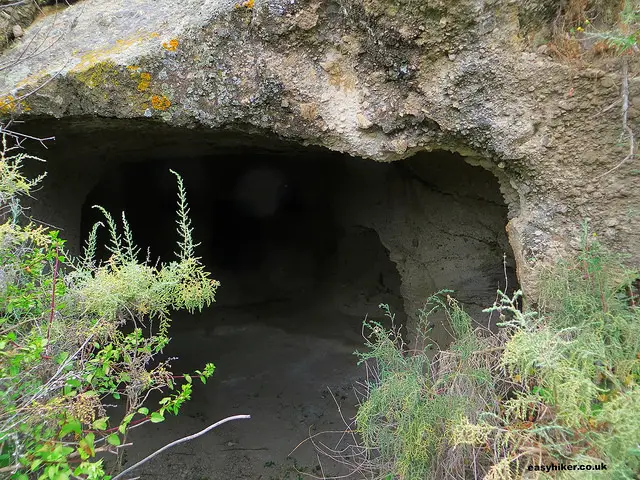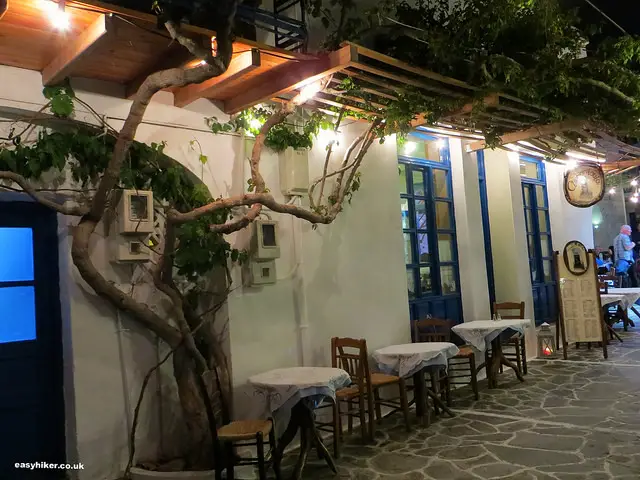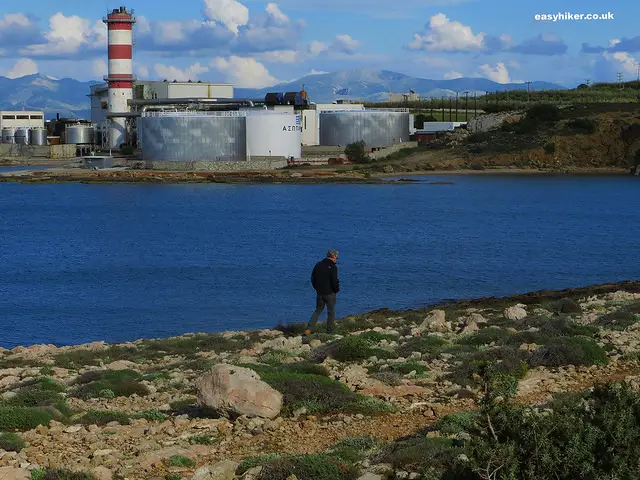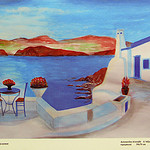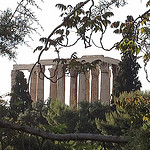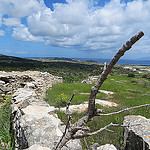Classical antiquity’s most famous lady, a most controversial military campaign, catacombs and a murderous espresso machine.
Hers is the body that launched a thousand ad campaigns …
… that graces a thousand flea markets all over Greece …
… and that has inspired many artists, the clumsy and the maladroit …
… as well as the playful and joyously camp …
… and the extremely loud.
The Venus of Milo is Milos’s most famous citizen ever, although she has long moved on and resided in Paris for the last 200 years.
Take the Venus de Milo Walk
The inhabitants of her native island in the southwesternmost corner of the Cyclades archipelago do not really feel betrayed – they understand that she belongs to the world rather than their own little rock – but nearly everybody we met in Milos during our trip expressed the wish that the local administration would make more of the fact that this is where the Venus (or Aphrodite) originally came from.
In fact, only a nondescript sign on scruffy grassland marks the spot where she was found by a peasant in 1820 …
… and where the most remarkable chapter of her 2000-year-long story began.
Her journey might easily have led the Venus to St Petersburg, Berlin or Istanbul, if the French had not outbid all rival nations after a local farmer had found the statue in his fields and taken her into his possession – and if they had not, famously, wrestled her away from the Russians just as they were about to carry her away on one of their own boats.
Once the Venus was safely installed in the Louvre, the French did everything to polish and embellish the large lady’s (the original is more than 2 m tall) reputation: she was declared to be of classical provenance, created at the height of Athenian power and artistic prowess, probably by a famous sculptor, it was claimed, and a base that identified a certain Alexandre of Antioch as her creator, a provincial journeyman from a town that had not even been established in classical times, was ignored and conveniently lost. (Gregory Curtis reports all those details and more in his fascinating book Disarmed.)
Just as remarkable as this story is the fact that the Venus is not the only, perhaps not even the most interesting thing about this scruffy bit of grassland on the northeastern coast of Milos Bay.
In fact, the gymnasium where the Venus (most likely) stood belonged to a thriving ancient community which continued from classical to early Christian times and was the target of the Melian invasion: the Vietnam War of its day, an uncompromising and controversial Athenian campaign against one of the few islands in their backyard that had consistently defied them.
The Athenians eventually killed all male inhabitants of the island and sold all women and children into slavery – to the shock and horror of many Athenian intellectuals such as Euripides, whose play The Trojan Women reflects his opinions about the campaign’s brutality.
And Thucydides, in his retelling of the dialogue between negotiators from Athens and Milos (in the History of the Peloponnesian Wars), reserves the best lines for the Miloans, before resignedly establishing the doctrine that “the strong do what they want and the weak suffer what they must” – a doctrine that has survived to this day, in one form or another, and will, I suspect, continue to be applied when most other foreign policy doctrines have long been forgotten.
From antiquity until the early Middle Ages, the capital of Milos more or less stood in the area where the Venus was found – today’s small village of Klima at the bottom of the slope would have been the town’s harbour.
After an earthquake destroyed most of the capital’s buildings in the 6th century, the inhabitants moved further inland to Zephyria, which itself was later abandoned when geothermal activity – hot springs – pushed toxic fumes through the porous soil into air, in the manner of a murderous espresso machine.
This is when people began to move to Plaka, the “Old Town” high above the entrance of the bay. The coastal area of Adamas, the largest town on Milos today, was only settled from the 19th century onwards when the danger of piracy had largely been eliminated in the eastern Mediterranean.
Most of these historically interesting sites can be strung together into a walk that starts in the harbour town of Adamas from where you can walk along the road to Plaka, 2 km away, with spectacular views across the bay.
From Plaka, take the small road down to Klima, passing by the site where the Venus was found and by the ancient theatre, probably built in the 3rd century BC, which bears witness to the wealth and sophistication that Milos acquired during this period.
On your way back up, you should visit the catacombs that were created by some of the region’s earliest Christians, Jewish converts who had come to Milos in order to assist in the export of the island’s minerals. Some of these tombs and churches were carved into the soft stone as early as the 1st century AD.
Before you return to Adamas, you should pay at least a brief visit to the local Archaeological Museum, if only to have a look at a life-size copy of the island’s most famous citizen …
… and, if you feel peckish, a meal at one of the Old Town’s many excellent restaurants. We can recommend Archontoula where we had an excellent dinner on a very pretty and scenic terrace.
If, however, you arrive back in Plaka outside of common meal hours, you can also postpone your meal until your return to Adamas and try the Mikros Apoplous near the town’s harbour – a little fancier than Archontoula, perhaps, and less traditional, but also well worth a try.

